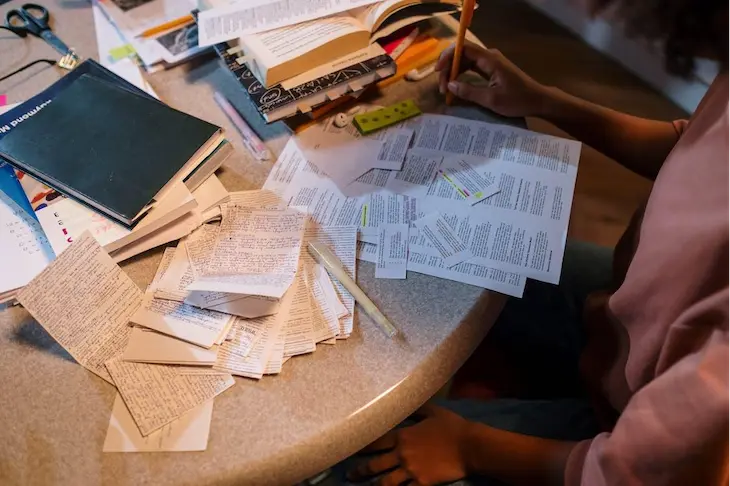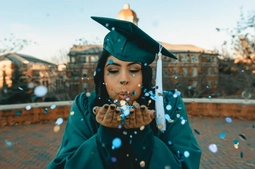Being accused of plagiarism, especially falsely, may be daunting. Academic and corporate establishments take plagiarism seriously. Also, an accusation can undermine a professional or student's credibility. Knowing how to defend yourself is crucial in this situation. Knowing what plagiarism is, what happens when one is caught plagiarizing, and how to recognize it is crucial to making a convincing case. Establishing your innocence mostly depends on your clear definition of plagiarism and establishing that your work is yours. Many students are unaware that inadvertent plagiarism might result from incorrect referencing, bad paraphrasing, or neglect of tracking sources. Presenting drafts, evidence of independent research, defense against accusations, and a dependable tool to check plagiarism can assist you in strengthening your case.
Common plagiarism types
There are several kinds of plagiarism, and not every instance calls for deliberate dishonesty. While some situations follow from ignorance of appropriate citation techniques, others occur from negligence. Understanding the main types of plagiarism will enable professionals and students to guarantee they avoid plagiarism before submitting their work.
- The best ways to detect plagiarism are to use direct plagiarism. It’s the copying of text exactly word-for-word without mentioning the sources. The most extreme kind of plagiarism can lead to harsh legal or academic fines.
- Self-plagiarism is the reusing of past work without authorization or appropriate reference. Though it is their labor, turning in the same material for several projects is seen as unethical.
- Patchwriting is the subtle modification of an original work that preserves its concepts and structure. Though many students think this is a reasonable behavior, it is still plagiarism.
- In improper paraphrasing, the sentence structure remains the same while just a few words from the original text are changed. Good paraphrase calls for properly rewording ideas and giving the original author credit.
- Source-based plagiarism involves the use of erroneous referencing or fraudulent or misleading materials. If a student falsifies sources or misplaces data, this type of dishonesty can have major repercussions.
- Students who neglect to credit an author because of ignorance of citation guidelines are engaging in unintentional plagiarism. Academic integrity is seen to be violated even by unintentional plagiarism.
Examples of what plagiarism is
One must be able to tell original work apart from plagiarism. Many students fail to grasp how appropriate attribution works, thereby inadvertently committing plagiarism. While some kinds of plagiarism are deliberate, others come from ignorance of citation policies. Knowing the distinctions between plagiarism and properly cited work can help you avoid plagiarism. Examples of both plagiarized and non-plagiarized work are below.
Plagiarism:
- Copying a paragraph from a website and putting it into an essay without referencing the author or using quotation marks. Changing little words does not constitute plagiarism; omitting to cite the source does just that. Tools for plagiarism detection and professors can help to quickly spot this.
- Using material produced by artificial intelligence without correctly referencing or altering the source. AI technologies can generate original writing, yet it might still be seen as plagiarism if the material is not really produced by you. AI detection software is currently being used by several universities.
- Copying a paragraph while maintaining the same language pattern as the original work. Good paraphrase calls for entirely restructuring and new expression of ideas while honoring the original author, not only a few word replacement.
Many students struggle with proper citation and formatting, which can lead to unintentional plagiarism. To ensure originality, some turn to professional writing services that offer guidance on structuring essays and correctly citing sources. Choosing a reputable platform is essential, and checking feedback such as SpeedyPaper review can help students find reliable assistance that aligns with academic integrity standards.
Not plagiarism:
- Properly crediting an item you have summarized in your own words. This is a reasonable academic approach if the major concepts are rewritten in an original manner and properly referenced.
- Including well accepted knowledge, such as "The Earth orbits the Sun," which calls for no referencing. General knowledge cannot be attributed to one creator as it is not owned by anybody.
- Turning in an essay bought from the best essay writing service reviews, as many students delegate such an assignment. You can get an excellent essay, without major academic dishonesty.
- Doing autonomous research and producing novel results free of duplication of past work. Should your own research lead to original results, your work stays free from plagiarism.
- Referencing a source using the suitable citation and quotation marks. Using the exact words from another book and correctly referencing the author will not be plagiarism but rather a respectable use of a source.
Maintaining academic integrity requires one to know what plagiarism is exactly. Many students unintentionally plagiarize via poor paraphrase or absent citations, which can have major repercussions. Strong research and citation practices help students avoid plagiarism and guarantee their work satisfies ethical criteria. If doubtful, get peace of mind by using tools to check for plagiarism before submission.

Plagiarism has effects outside of the academic sanctions. Being accused of plagiarism could harm one's reputation and have long-lasting effects. Plagiarism checkers are used by many institutions to guarantee that students turn in their original work. So, check other consequences institutions use to catch a student plagiarizing:
- Academic penalties – If a student failed a college class because of plagiarism, they can get a failing mark or suspension.
- Legal consequences – Certain instances of plagiarism could result in litigation, particularly if copyrighted elements are used.
- Damage to reputation – Employers, teachers, and peers can start to doubt someone convicted of plagiarism.
- Loss of future opportunities – Academic dishonesty can cause scholarships, internships, and employment opportunities to be withdrawn.
- Financial costs – Legal conflicts about plagiarism can lead to penalties or litigation, especially in professional writing and publication.
How to prove you didn’t plagiarize?
If you have been accused of plagiarism, it is critical to remain calm and present a clear defense. Realizing how to prove you didn’t plagiarize a paper calls for proving the validity of your work and showing originality. Academic integrity is highly valued at institutions, hence allegations—regardless of their validity—may have dire results.
Here are essential steps to defend yourself:
- Present original drafts – Share early drafts of your paper to demonstrate your writing process. These drafts show how your ideas changed, indicating they weren't copied. Handwritten notes, thought maps, and brainstorming materials support your originality. Demonstrating a clear idea and revision development is one of the best methods to answer how to prove you didn't plagiarize in academia.
- Provide supporting materials – Show your research materials, including book notes, article printouts, annotated papers, and draft outlines. Your web surfing history or bookmarks might corroborate your claim. Understanding why do students plagiarize can also help address misconceptions about proper research methods and citation practices.
- Use plagiarism reports – Running your work via a trustworthy check for plagiarism program before submission helps prove its originality. A plagiarism notice from a trustworthy program might provide evidence to contest a fraudulent accusation. Many colleges regard these reports as proof, especially if they show minimal similarity.
- Request a reevaluation – If a professor or institution claims plagiarism, request a breakdown of the highlighted areas. Discussing these portions with an academic advisor helps explain. Flagging common terms, technical jargon, or properly cited sources might cause false positives.
- Compare with flagged content – If your work has been flagged for plagiarism, examine it. Compare your text to the supposed source for similarities. If your material matches another, explain your conclusions. Focus on citing or paraphrasing highlighted content to prove your innocence and defend your position with sound logic.
- Get an expert opinion – A professor, librarian, or academic integrity officer can assist you in understanding your situation. An impartial third party assessing your work may help you refute the claim. Seeking professional guidance can be a key step in how to prove you didn’t plagiarize. Expert insights can clarify misunderstandings and strengthen your case.
- Understand institutional policies – Every school has its own plagiarism, citation, and appeal rules. Rereading these policies can help you handle the problem. Some colleges provide formal appeals to dispute allegations, which is crucial when understanding how to prove you didn’t plagiarize.
Defending plagiarism charges might be stressful, but a methodical strategy can show your academic honesty.
How to check for plagiarism and ensure your work is original
Avoiding plagiarism calls for initiative. Students can lower their chance of being unfairly charged by acting appropriately before submission. Learning how to not get caught plagiarizing guarantees that work is really unique, rather than helping one escape discovery. Students can accomplish this:
- Use reliable plagiarism detection tools – Doing a check for plagiarism before turning in guarantees correct citation of all sources.
- Keep track of all references – To guarantee accuracy in references, have a list of sources handy throughout the writing process.
- Paraphrase effectively – Reword concepts in your own voice to convey actual comprehension, not only replace words.
- Using a writing service can help – Sometimes, students struggle with proper citation and formatting. Checking WritePaperFor review to ensure that academic guidelines are followed while maintaining originality.
- Proofread for accidental plagiarism – Reviewing your work will help you avoid plagiarism and guarantee accurate acknowledgment of all the sources.
Conclusion
Professionals and students alike depend on an awareness of plagiarism and how to prove uniqueness. Though false allegations are common, understanding how to prove you didn’t plagiarize guarantees that your work will be properly defended. Whether you are a professional turning in research or a student preparing an academic paper, you should avoid plagiarism. Your work will stay ethical and trustworthy if you correctly cite sources, retain records of academic work, and apply dependable plagiarism in another context detection technologies.
FAQs
You can provide original drafts, research notes, and plagiarism reports as evidence to demonstrate the originality of your work. Showing timestamps on digital files and annotated materials also strengthens your claim.
Keep a record of all sources, including book notes, article printouts, and citation details, to show proper attribution. Organizing drafts and maintaining a bibliography can further help you avoid plagiarism accusations.
If falsely accused, request a plagiarism check report, compare flagged content with your original writing, and seek expert guidance. Presenting drafts and research materials can prove your work is authentic.




